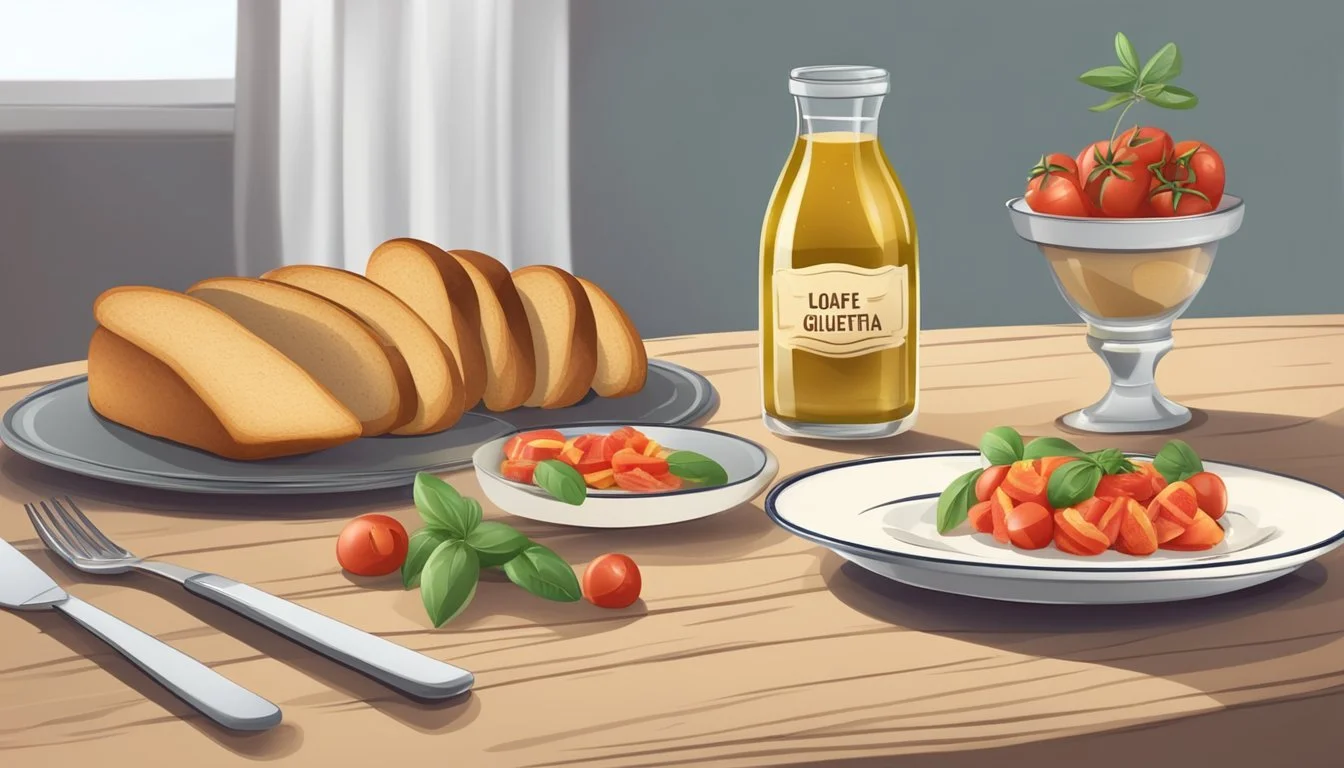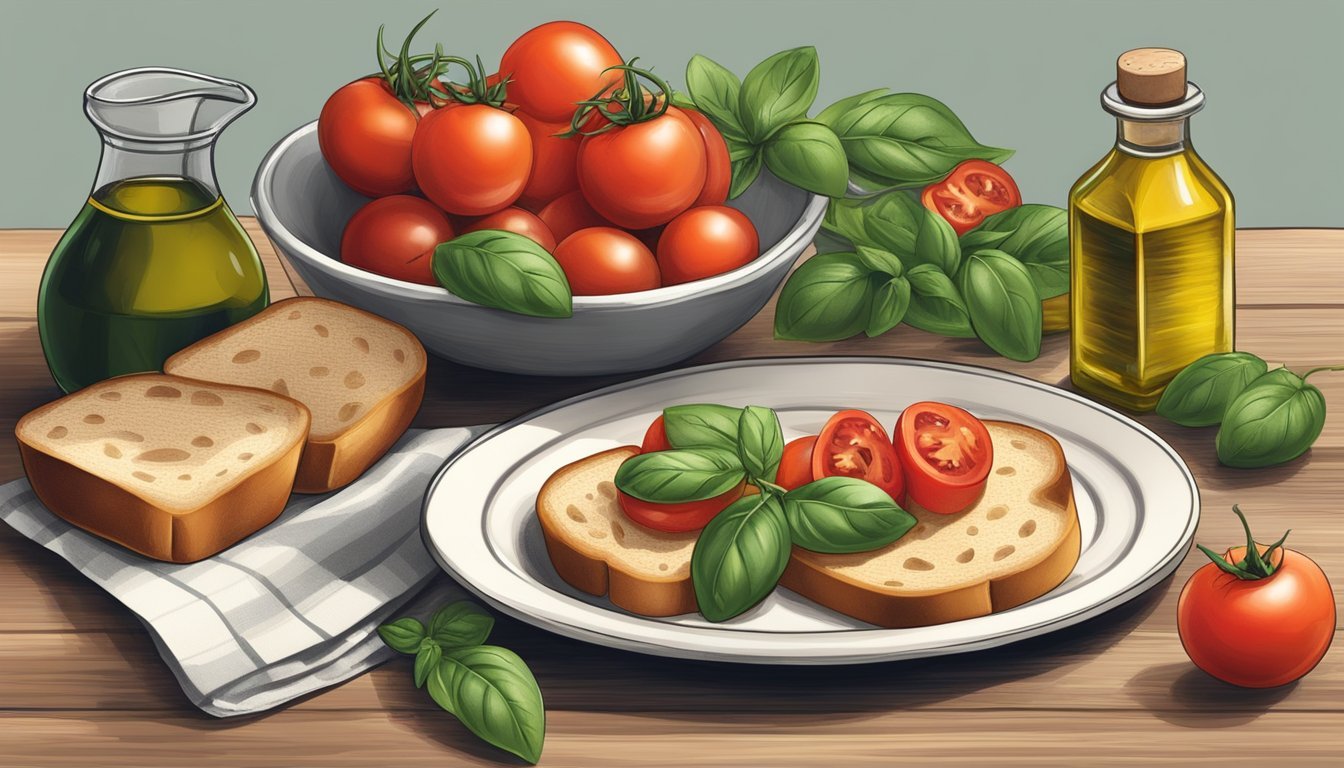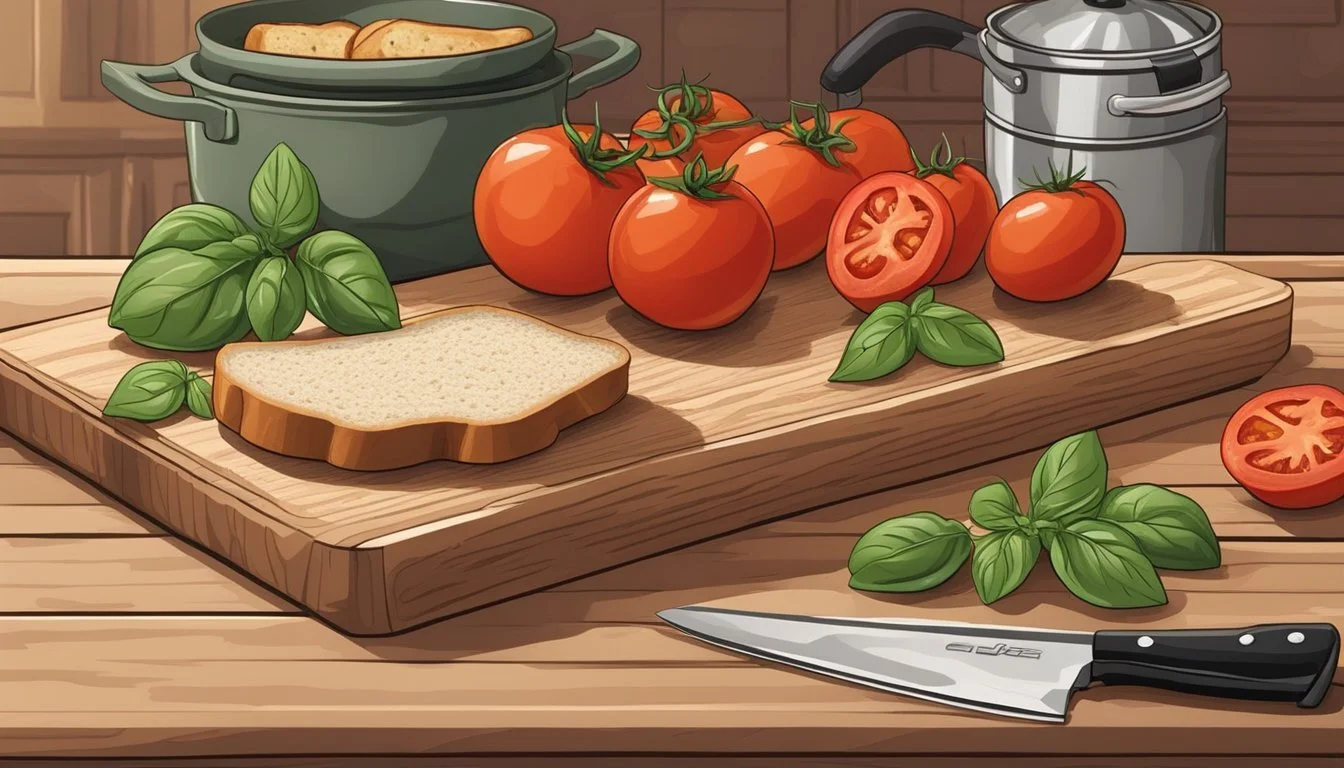Is Bruschetta Gluten-Free?
Unveiling the Facts Behind This Classic Appetizer
Bruschetta, the quintessentially Italian appetizer, traditionally consists of grilled bread rubbed with garlic and topped with tomatoes, olive oil, salt, and pepper. This simple yet flavorful concoction is lauded for its fresh taste and ease of preparation, making it a popular snack or starter in homes and restaurants alike. The key to authentic bruschetta lies in the quality of the ingredients: ripe tomatoes, aromatic garlic, and high-quality olive oil are essential for a vibrant and satisfying dish.
The question of whether bruschetta is gluten-free depends significantly on the bread used as the base. The typical bruschetta recipe calls for slices of baguette or similar varieties of wheat-based bread, which naturally contain gluten, making the dish unsuitable for those with celiac disease or a gluten intolerance. However, with the rising demand for gluten-free options, many home cooks and chefs are adapting the recipe to cater to these dietary requirements. Gluten-free bread is a viable alternative, and when toasted to perfection, it provides the same satisfying crunch and sturdy base for the juicy, seasoned topping.
Preparation of gluten-free bruschetta involves ensuring all elements, including toppings and seasonings, are free from gluten-containing ingredients. Contamination is also a consideration, and care must be taken to avoid cross-contact with gluten-containing products during the preparation process. Whether served at a casual family gathering or as a refined starter in an Italian eatery, gluten-free bruschetta can deliver the same delightful taste and texture as its traditional counterpart, proving that it is possible to enjoy this timeless snack while adhering to a gluten-free diet.
Understanding Gluten
In the context of dietary choices and food preparation, it's essential to recognize what gluten is and where it's commonly found. This knowledge is particularly important for individuals requiring gluten-free diets.
What Is Gluten?
Gluten is a family of proteins predominantly found in grains such as wheat, barley, and rye. It acts as a binder, holding food together and giving it shape and elasticity. In baking, gluten is what gives dough its chewy, stretchy quality.
Sources of Gluten in Diet
The primary sources of gluten in the diet are:
Grains: Including wheat (e.g., bread, pasta, cereals), barley (e.g., malt, beer, some food coloring), and rye (e.g., rye bread, rye beer).
Processed Foods: Often contain gluten for texture or as a thickening agent. These can include salad dressings, sauces, and soups.
For someone who is gluten-free, avoiding these sources is crucial to maintain their health, and gluten-free alternatives should be sought. Regularly inspecting food labels for gluten content is a standard practice for those with gluten sensitivities or celiac disease.
Bruschetta Basics
Bruschetta, a classic Italian appetizer, showcases a blend of fresh ingredients assembled on toasted bread slices. The simplicity of its components and preparation has popularized it as a summer favorite.
Traditional Ingredients
Ingredients:
Tomato: Ripe and finely chopped.
Fresh Basil: Often cut into ribbons.
Garlic: Minced or rubbed on the bread.
Olive Oil: Used for the topping and to brush the bread.
Salt: To taste.
Balsamic Vinegar: Sometimes added for acidity.
Baguette: Sliced and toasted; gluten-free options are available.
Pepper: Freshly ground to complement the tomato's sweetness.
These foundational ingredients come together to form bruschetta's beloved topping. Although olive oil is essential, its use may vary from drizzling over the topping to brushing on the bread before toasting. Fresh basil elevates the dish with its aromatic presence.
Origin and Tradition
Bruschetta hails from Italy and has become a representation of Italian cuisine's emphasis on freshness and high-quality, seasonal ingredients. Its traditional base is a grilled baguette or rustic loaves, rubbed with garlic and topped with a mixture of tomatoes, basil, and olive oil. This dish captures the essence of Italian summer with this medley, seasoned with salt and sometimes pepper, and occasionally with a splash of balsamic vinegar for a tangy twist.
The traditions behind bruschetta serve as a tribute to resourcefulness, transforming stale bread into a delightful starter that accentuates the flavors of the garden's bounty. Despite its simplicity, bruschetta is a testament to Italy's culinary richness and the global appeal of its comforting, straightforward flavors.
Gluten-Free Alternatives
For individuals requiring a gluten-free diet, enjoying traditional bruschetta can be challenging due to the presence of gluten in regular bread. This section explores gluten-free bread alternatives suitable for making bruschetta, focusing on pre-made options and recipes for homemade artisan bread.
Selecting Gluten-Free Bread
When selecting a gluten-free bread suitable for bruschetta, one can opt for store-bought varieties that mimic the texture and taste of traditional baguettes. Shoppers should look for these attributes in gluten-free bread:
Texture: A crusty exterior and softer interior similar to an artisan bread.
Ingredients: Free from gluten-containing components, often including alternative flours such as almond, chickpea, or sweet potato.
Labeling: Certified gluten-free labeling to ensure the absence of cross-contamination.
Homemade Gluten-Free Bread Options
For those who prefer homemade gluten-free alternatives, various recipes offer the means to create an artisan-style gluten-free baguette. These recipes typically require:
Alternative flours: A blend of gluten-free flours such as rice, tapioca, and potato starch often creates the best texture for a baguette.
Binding agents: Ingredients like xanthan gum to provide structure and elasticity to the dough.
A simple recipe might involve:
Mixing the dry ingredients (gluten-free flour blend and xanthan gum) with wet ingredients (water, oil, and yeast).
Shaping the dough into a baguette form.
Allowing for proofing time to achieve the appropriate rise.
Baking at a high temperature, around 450°F (232°C), to attain a golden crust.
Health and Nutrition
Bruschetta is an Italian appetizer that consists of grilled bread rubbed with garlic and topped with tomatoes, olive oil, salt, and basil. When examining its health and nutritional impact, it's important to consider the ingredients used, as they determine the dish's overall nutritional profile and the presence of beneficial components.
Nutritional Profile of Bruschetta
The typical components of bruschetta contribute to its nutritional content. A classic bruschetta with tomatoes atop grilled bread includes:
Calories: Caloric content varies, but it is generally considered a low-calorie option.
Fat: Mainly from olive oil, providing healthy monounsaturated fats.
Sodium: Minimally present, depending on the amount of added salt.
Potassium: Tomatoes contribute to the potassium content.
Carbohydrates: Present primarily in the bread; whole-grain options offer more fiber.
Fiber: Depends on the bread choice; whole-grain versions offer more.
Sugar: Natural sugars come from the tomatoes.
Protein: Generally low, may have a slight amount from toppings like cheese.
The table below summarizes key vitamins and minerals found in a typical serving of bruschetta:
Nutrient Importance Vitamin A Found in tomatoes; important for vision and immunity. Vitamin C Also present in tomatoes; promotes skin health and immune function. Calcium If cheese is added, it contributes to calcium content. Iron Available in some bread varieties and toppings like spinach.
Beneficial Components
Bruschetta offers several health-promoting components:
Antioxidants: Tomatoes provide lycopene, a potent antioxidant.
Dietary Fiber: Whole-grain bread supports digestive health.
Vitamins and Minerals: Fresh vegetables add a variety of micro-nutrients crucial for bodily functions.
The use of olive oil not only enhances flavor but also brings with it oleic acid and polyphenols, which are known for their positive influence on heart health and cholesterol levels.
When selecting ingredients for bruschetta, one can influence the nutritional benefits. For example, opting for whole-grain or sourdough bread can increase the fiber content, which aids in digestion and promotes a feeling of fullness. The combination of fresh vegetables and herbs tops up the vitamins and minerals, enriching the body with essentials like vitamin C, potassium, and iron.
Perfecting the Recipe
Crafting a flawless gluten-free bruschetta hinges on selecting the right ingredients for both the topping and the base, ensuring a harmonious blend of flavors and textures.
Achieving the Right Balance
For a stellar bruschetta, one seeks a medley of ripe, juicy tomatoes and aromatic basil leaves accompanied by a seasoning duo of sea salt and freshly ground black pepper. Cherry tomatoes or heirloom tomatoes are excellent choices, each imparting its unique sweetness and robust taste. When dicing the tomatoes, one should also consider the moisture content, as excess juice can lead to soggy crostini. Draining the tomatoes after cutting allows for concentration of flavors without compromising the crispness of the bread.
In terms of cheese, a fine-grain parmesan cheese adds a nutty undertone, while mozzarella, with its delicate and creamy texture, offers a delightful melt-in-the-mouth sensation. Both cheeses should be used judiciously to complement rather than overpower the freshness of the tomatoes and basil.
Recipe Variations
Bruschetta is versatile—accommodating various adaptations while remaining true to its origins:
Classic Tomato-Basil: Combine diced tomatoes with hand-torn basil leaves. Season with sea salt and black pepper to taste.
Cheese Lovers' Twist: Add a sprinkle of parmesan to the mixture, or top each crostini with a thin slice of mozzarella before a quick broil.
Garlic Infusion: Rub the crostini with a garlic clove for a subtle aromatic flair, or mince garlic into the tomato blend for a more pronounced flavor.
Here's a simple representation of the essential components for gluten-free bruschetta:
Ingredient Classic Cheese Twist Garlic Infusion Tomatoes ✔️ ✔️ ✔️ Basil Leaves ✔️ ✔️ Optional Sea Salt ✔️ ✔️ ✔️ Black Pepper ✔️ ✔️ ✔️ Gluten-Free Bread ✔️ ✔️ ✔️ Parmesan Cheese Optional Optional Mozzarella ✔️ Optional Garlic Optional Optional ✔️
One may choose to enhance their recipe by incorporating ingredients such as balsamic vinegar or chili flakes, ensuring every variation squarely hits the mark of a delicious, gluten-free bruschetta.
Serving and Presentation
When preparing bruschetta as a gluten-free option, the key elements are the quality of the gluten-free bread used and the freshness of the toppings. Presenting this appetizer tastefully can enhance its appeal and complement the flavors.
Tips for Serving Bruschetta
He or she should ensure that the gluten-free bread or crackers chosen for the bruschetta are toasted to a light golden brown to add both texture and taste. A tablespoon of the tomato mixture can be spooned onto each slice just before serving to prevent the bread from becoming soggy. It's important to serve bruschetta immediately after assembling to maintain the crispness of the bread.
Toast bread: 3-5 minutes until golden.
Assembly: Spoon tomato mixture on bread before serving.
Presentation: Serve on a platter or individual plates.
Pairings and Accompaniments
Bruschetta pairs well with a variety of sides and can be included as part of a larger appetizer selection. Often, it is served alongside other Italian-inspired dishes such as caprese salad (What wine goes well with caprese salad?) or accompanied by a sage-infused dip. For a more substantial meal, one might offer it as a starter at restaurants before the main course. The freshness of the tomatoes and the aromatic herbs in the topping make it a versatile dish that complements many flavors.
Italian-inspired sides: Caprese salad, sage dip.
Restaurant starter: Offer before the main course.
Accompaniments: Gluten-free versions remain tasty and true to the traditional recipe.
Social and Cultural Impact
Bruschetta, a traditional Italian antipasto, has transcended its origins to become a beloved dish in social gatherings and an icon in culinary pop culture. Its adaptability to dietary needs, such as gluten-free variations, plays a significant role in its popularity.
Bruschetta in Popular Culture
Bruschetta has made a prominent place for itself in popular culture due to its simple elegance and versatility. It features regularly in cookbooks, cooking shows, and restaurant menus around the world. The dish's ability to be modified, like replacing traditional bread with gluten-free alternatives, makes it inclusive for those with gluten sensitivities, thereby maintaining its social appeal. The gluten-free adaptations of bruschetta retain the essence of the appetizer while providing a safe option for individuals with conditions such as celiac disease.
Sharing on Social Media
Social media platforms like Instagram, Facebook, and Pinterest have become hotspots for food enthusiasts to share their culinary creations, including gluten-free bruschetta.
Instagram: The visual-centric platform is filled with colorful images of gluten-free bruschetta, showcasing various toppings and presentations that inspire followers.
Facebook: Groups and pages dedicated to gluten-free living often feature bruschetta recipes, highlighting its adaptability and how to ensure it's safe for those with dietary restrictions.
Pinterest: The site acts as a repository of gluten-free bruschetta recipes, with pinboards that cater to a variety of tastes and highlighting the ease with which this dish can be prepared.
These platforms not only inspire home cooks but also foster a community for those looking to maintain their cultural food traditions in a gluten-free format, proving that dietary limitations do not prevent participation in the rich traditions of food culture.
Hosting and Events
When considering gluten-free options for gatherings, bruschetta offers versatility and appeal. It can be customized to accommodate dietary preferences and is simple to prepare for various event sizes.
Incorporating Bruschetta into Menus
For hosts keen on including bruschetta in their event menus, it’s essential to ensure that all components are gluten-free. The traditional bruschetta base—crispy slices of bread—can be substituted with gluten-free alternatives to avoid wheat-based products. Use gluten-free garlic bread, lightly toasted for a crunchy texture, and enhance the flavor with a spread of butter or a drizzle of olive oil, followed by a rub of garlic for that aromatic kick.
A classic bruschetta topping includes a mix of diced plum tomatoes and vegetables, like onions or cucumbers, seasoned with salt, red pepper flakes, and perhaps a splash of vinegar or lemon juice. For a richer taste, one can add goat cheese or other gluten-free cheeses. A vibrant assortment of toppings can also incorporate fruit for a sweet twist.
Ideal Occasions for Bruschetta
Bruschetta shines at events where finger foods are preferred, making them an ideal choice for lunch gatherings, potlucks, and casual dining situations. They are excellent for guests to enjoy a light, savory snack that is filling yet not overly indulgent. As for specific occasions, bruschetta fits seamlessly into the menus of garden parties, wine tastings, or even as a welcoming appetizer at wedding receptions. The key is in its simplicity and the freshness of the ingredients, which together can elevate a humble dish to an event staple.









